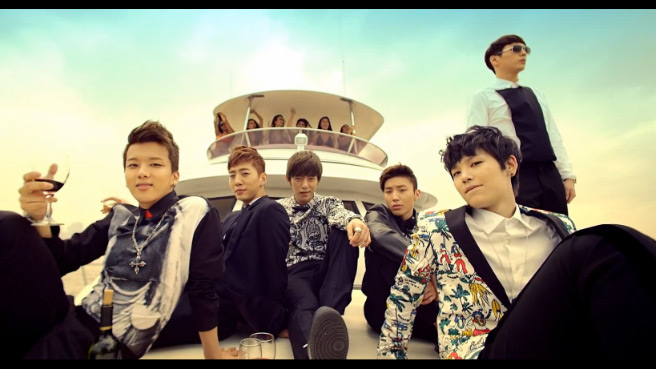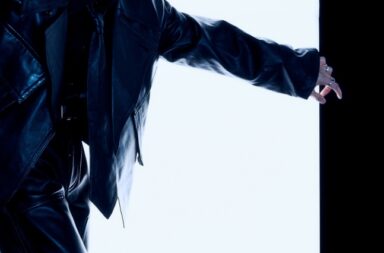
We’ve covered songs of the decade and had a retrospective on how Korean hip-hop has evolved, so it only makes sense that we also talk about music videos. MVs are an effective marketing tactic, one that uses a visual medium to sell to viewers a song. The MV is also a hallmark of K-pop, and they are getting increasingly creative and diverse in the message.
But MVs come in different types, and it would be unjust to pigeonhole the myriad of choices in one list. For this series of the Seoulbeats Decade in Review, we have split the MVs into three types: performance, narrative, and aesthetic/symbolism-focused. In this list, we concentrate on the music videos that are dominated by a narrative story. It could be a story told in one music video, or it could be a fragment in a larger, complex narrative. Either way, here are our writer’s selections of story-based music videos.
2010
Writer: Pat
Ga-In, “Irreversible”
Ga-In’s solo debut, “Irreversible,” comes with a ten-minute long music video that combines narrative and performance elements. It opens with Ga-In dragging a leather bag with money from below the docks. As she leaves, she sees a man across the street, waiting behind the steering wheel. She smiles, he’s familiar to her and a welcome sight. But then he drives off and thus the hook of the narrative is complete. As the orchestra plays, and “Irreversible” has not yet begun, we see Ga-In run through the streets, chasing after the man. And as “Irreversible” begins, we see her physically throw herself at him, clinging on to the last remnants of their relationship.
The music video supplements the tango influences of the song, playing into the desperation that is so heavy in the lyrics and the song’s instrumentals. Other factors that play into this anguished atmosphere are the darker shades and the barrenness of the desert during the dance sequences.
2011
Writer: Gina
Song Ji-eun, ft. Bang Yongguk, “Going Crazy”
In 2011, Song Jieun made her solo debut with “Going Crazy” featuring Bang Yongguk. While the track itself is intense, it works with the subtler suspense of the MV in order to bring cold shivers down your spine. It was, as it is now, a rare MV that dares to touch on stalking, kidnapping, and evidently murder. While these topics aren’t directly mentioned in the song, the track and MV rely on each other to insinuate this kind of dangerous relationship. Viewers see, hear, and get to imagine parts of such a relationship that come together to reveal the horrific outcome in the end.
Although, the plot is ultimately up to the viewer’s interpretation. One could assume Min Hyorin’s role is the victim who gets to avenge her tormentor. Or, one may imagine Bang Yongguk’s lyrics reflect her mindset, and the bounded man reflects an outcome of such toxicity. Either way, leaving the end up to viewers’ imagination warrants an endless amount of ways to imagine a stalking lover. Such an approach was practically unheard of in earlier K-pop, but made for an innovative debut that resounds far after the song is complete.
2012
Writer: Gaya
K.Will, “Please Don’t”
One of the most devastating K-pop MVs ever made, the success of K.Will’s “Please Don’t” is due to much more than its “twist” ending. Firstly, Seo Inguk acts his heart out, his turbulent outbursts purposefully juxtapositioned with Dasom and Ahn Jaeyhyun’s lighter portrayals. The pair are happily in love, while Seo suffers on the sidelines.
It’s not just the fact he has to stand by and watch them marry as Taeyang does in “Wedding Dress;” it’s the fact that the couple is able to so openly celebrate their love with not only the acceptance but the blessing of society, while he can only fantasise about telling his truth. Here is where the MV goes far beyond being a mere visual aide to very deliberately confronting society’s collective heteronormative bias and fetishisation of the LGBTQ+ community’s suffering.
“Please Don’t” takes great measures to show how, at the core, these emotions are normal for everyone. Once you digest the ending and rewatch the MV, you will see that nothing has changed other than our own heteronormative perceptions, and Zanybros’s Hong Wonki deserves every plaudit for unflinchingly holding a mirror up to our own privilege, bias, and ignorance.
2013
Writer: Rimi
B.A.P., “One Shot”
When discussing narrative MVs, it’s impossible to leave out B.A.P.’s many cinematic, dramatic MVs, and the grandest of them all is “One Shot”. Reportedly produced at a staggering cost of 1 billion won (or ~ $910,000), it may also be K-pop’s most expensive MV, and is aptly characterised as a mini action flick. Its aggressive tone is in keeping with the group’s distinct style — which would go on to leave a lasting mark on K-pop.
In an alternate reality, B.A.P are gangsters. Young-jae has been kidnapped and the gang must pay a hefty ransom ($10,000,000 – is that TS Entertainment trying to recover the cost of the MV?). Featuring guns, an airplane hangar, and a seedy, abandoned metro station, the MV is unusually violent. We see B.A.P plan and execute a robbery to raise the money, and the final exchange with the kidnappers culminates in a shocking twist. For all its theatrics, the MV also ties in neatly to the message of the song by giving the boys a second chance, though in a fantastical way. It’s clear the rest of us only have one shot.
2014
Writer: Qian
Akdong Musician, 200%
Most of the best movies I’ve watched contain a reveal that makes a second viewing a necessity, such as Shutter Island, Hereditary and Parasite. AKMU’s debut effort, “200%”, is one of those MVs, albeit with a narrative decidedly more joyful and cute.
Suhyun’s a natural at playing the stalker as she follows her crush everywhere, secretly taking photos when she thinks he isn’t looking and hilariously pretending to take a selfie when he does. Any thoughts that the entire situation is creepy is mitigated by how she sells her character’s earnestness, and the idea that her crush reciprocates her feelings as well. The dance scenes she shares with Chanhyuk only helps to drive the feelings across.
Then comes the prestige: the scene literally unfolds to reveal that the intimate time they shared was only in her imagination, and another girl was in her place the whole time. It’s a brilliant move, simultaneously making the situation more believable and adding a whole new depth to her situation. In terms of visual storytelling, I can think of any other MV this year that had this amount of finesse, that was executed this well. For that, “200%” was the clear winner of 2014.
2015
Writer: Gaya
Shinee, “Married to the Music”
Cross-category: Narrative and Performance
Shinee’s videography spans a dizzying array of styles, concepts and creative choices (what even is “Ring Dong Dong”). But none have been as surprisingly successful as “Married to the Music.” What looked like — at best — an ill-timed extension of Shinee’s Halloween shenanigans for a repackage album, instead gave us what is arguably Shinee’s best music video ever.
The first 55 seconds on their own are a journey, presenting an unfamiliar scene to Shawols. Just as we’re all settling in for some creepy, colourful, and cheery fun, our singular bride heaves that cleaver and turns not just the MV, but our expectations and the nature of Shinee’s videography on its head (no pun intended).
While the narrative is a riotous homage to Korea’s penchant for summertime horror flicks, what truly sells it are the performances. Unlike “View,” the members are less stilted, knowing just how to over-and under-play their confusion, joy, and shock. The choreography is also seamlessly blended in; it’s not just the intercut dance shots, but also how certain moves are given context, like Jonghyun being carried by his members. “MTTM” is maybe the only time I prefer the MV to the live performance, a testament to its dynamism.
2016
Writer: Aaron
Zico, “I am you, you are me”
“I Am You, You Are Me” quite simply sums up the narrative of this MV. All caught in a space that only exists for the two characters. This isolation, further embodies the MV with its narrative structure, there is only “you + me”. Therefore, what makes this MV truly special is how it has woven such a simple concept into a beautiful video that feels so unique despite being yet another love story.
“We’ll become each other”, “I believe in destiny” it’s lovely how the lyrical themes of the track mirror the underlying themes of the MV. From the characters clothing choices that mimic one another, to the space around them morphing into itself. Their love story begins to meld into one, And since they complement each other in every single way, all the way down to their tattoos, how could it not be destiny?
When magazine covers have a mirrored quality to them, where a single bicycle becomes a bicycle for two and a store that had once been both open and closed is now only open and open. These gentle changes in the store they find themselves in, again mimic the lyrical structure of the track creating one of the prettiest love stories caught on tape this decade.
2017
Writer: Aaron
Triple H, “365 Fresh”
With hindsight, the “365 Fresh” MV seems like the chaotic centrepiece of the now-disbanded Triple H. Hyuna and E’Dawn’s infamous departure from Cube Entertainment due to them dating can be thoroughly traced along this MV. From the complex interpersonal relationships shown to the willingness to weave together storylines not often depicted in the K-pop sphere. What makes this MV exceptional, however, is not the shock-valued depictions but its ability to take an admittedly formulaic track and turn it into a kaleidoscopic thrill ride. In being able to convey three distinctly separate storylines (one for each member) into one fluid MV makes “365 Fresh” both fun and jarring to watch!
2018
Writer: Denise
UNB, “Only One”
Cross-Category: Narrative + Aesthetics and Symbolism + Performance
With an extremely strong dance lineup, the winners of KBS survival show The Unit showcased impressive choreography for their main title track “The Feeling”. But it was the music video that showed no choreography that left a greater impact. Shot in backgrounds that fit into either of two extremes — hauntingly vast or restrictively small — the members are seen as evoking a sense of despair and hopelessness beyond the seeming calm. In a state of loneliness and incompletion, they yearn for completion as they interact with juxtaposing symbols of life versus death, light versus dark, and freedom versus entrapment.
The seven-minute masterpiece forces viewers to slow down and immerse themselves in its story, as the members battle with the fleetingness of time. In the end, the members are seen standing in an empty arena together before walking through a dark tunnel into a blindingly bright light. In all of its simplicity, the music is a visual treat with its muted, unassuming palette that is dreamy and moody all at once. Yet, the music video’s main message is strongest when paired with its poignantly beautiful lyrics and the group’s backstory — one of hope, new beginnings, and second chances.
2019
Writer: Rimi
Sunmi, “Noir”
With social media taking over our lives in the 2010s, few MVs capture the narrative of the decade better than Sunmi’s “Noir” – and it is a fitting end to this list. In a bid to get more hearts, Sunmi, an Instagram influencer in loud clothing and make-up, resorts to dangerous activities such as setting her birthday cake on fire, for a photo op. Her actions quickly escalate in scale. She risks self-harm with knives, stages international vacations and hospital stays, and finally, in the ultimate act, sets her car on fire – only to take out her phone and pose for a selfie with it.
Throughout this, Sunmi is alone, and unless she’s looking at a camera, completely expressionless. The word “anxiety” adorns hairpins that come with a T-shirt stating “dislike” and “unfollow”. The video accurately portrays our social media addiction, our desire to filter our lives and show the very best of ourselves (or even lie), and its ability to isolate, rather than to draw people together.
Sunmi offers no answers in the MV and leaves us hanging with her – and our own – increasingly dangerous obsession with social media.
These were only some of our favorite narrative-driven videos. Look out for our following lists on performance-based music videos and those that are inundated by aesthetics and symbolism.
Youtube [1][2][3][4][5][6][7][8], Images via TS Entertainment, SM Entertainment)


